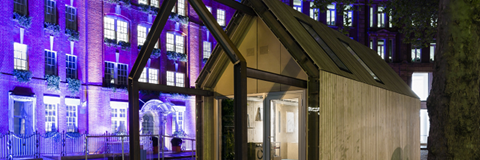Things are starting to change in the way property and infrastructure assets are managed. The ‘circular economy’ provides a framework for us to think about how we use materials and how we get the most value from them over time.

Currently, when we want to change or adapt our buildings, we face expensive work to remove materials and replace them with others. Old materials are often simply disposed of, returning no value back to the owner or developer.
As part of the London Design Festival, my company and our industry partners built The Circular Building, confirming our belief that we can do things very differently.
If we design our buildings with material recovery in mind, the idea of buildings as material banks could emerge. Using digital data and modelling techniques, we can create a comprehensive store of all material data.

At the same time, we can electronically tag every building component and monitor its performance with smart building technology. With this knowledge in place, we are able to design materials to be replaceable over time, so that in future owners and developers could lease rather than purchase materials. Expand this concept to cover all materials and components and we have a completely different way of designing, constructing and adapting our buildings - and a new approach to material ownership.
Circular economy
Let’s take a simple example. Desso, a carpet manufacturer, will lease you a carpet rather than sell it to you.
Your building has smart controls and knows how many times someone walks over the carpet. It also knows the design life and can therefore tell you and the manufacturer when to replace that carpet. As you leased the carpet, Desso will arrive, take away the old carpet and replace it. Material components in the old carpet will then be remanufactured into a new carpet and leased on.
Imagine that your whole building is made from materials that can be treated in the same way, and the positive cost and environmental implications of adopting circular economy principles become clear. This model of paying for performance rather than owning materials is gathering momentum in the faster-moving areas of building fittings, fixtures and lighting - but this is only the start.
Forward-thinking clients and developers are already looking closely at the value of the materials they use and how this can be recovered throughout the development lifecycle. Taking this approach presents manifold benefits. Buildings will become more adaptable, enabling them to better meet the changing needs of tenants, while waste from the building and development industry will be dramatically reduced.






























No comments yet